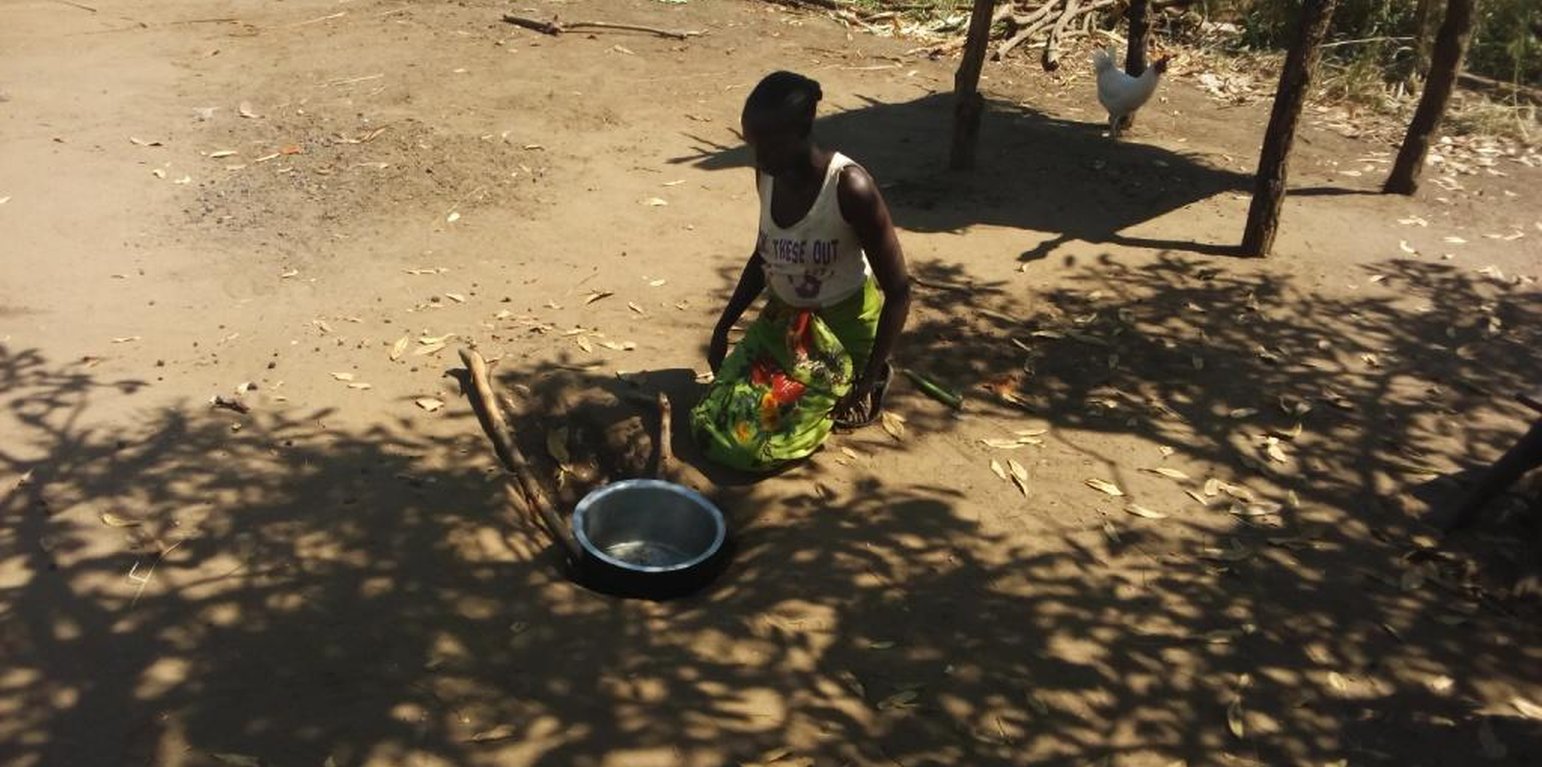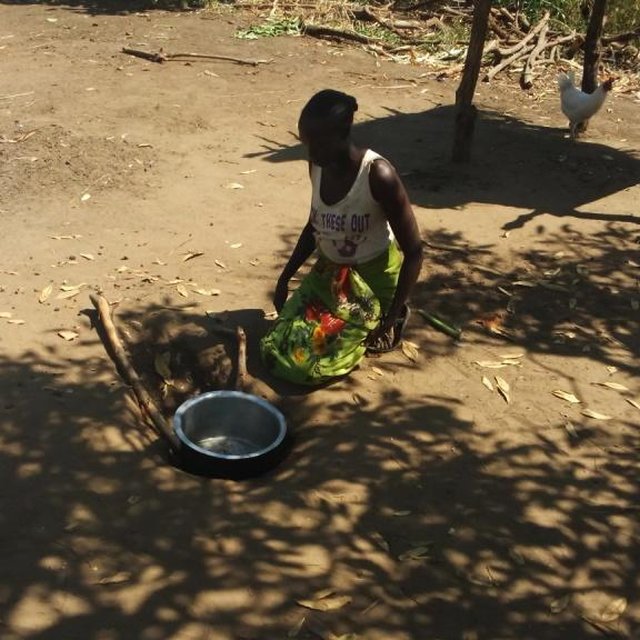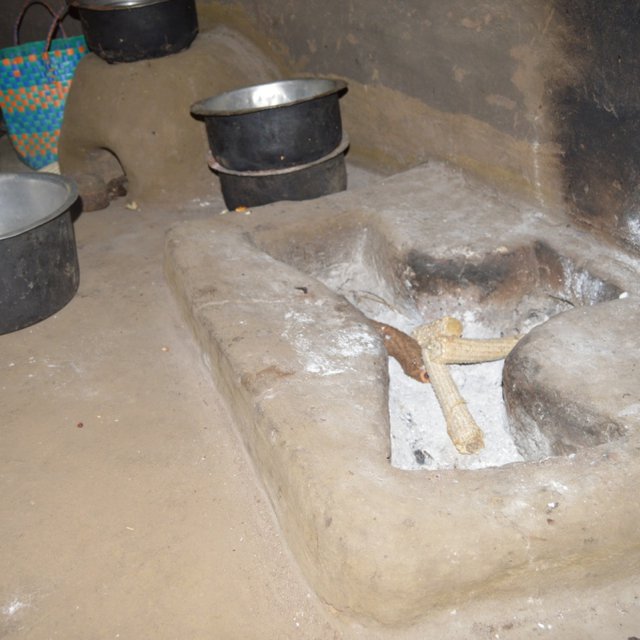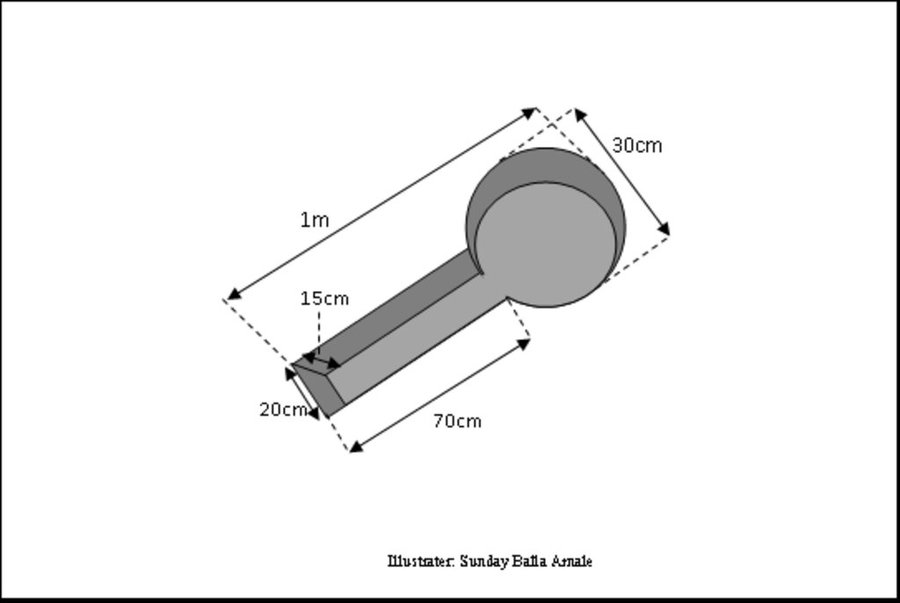



The rate at which forests are disappearing in northern Uganda is so frightening that strategic ameliorative innovations such as reduced wastage of biomass energy need to be envisioned. As such, the technology known as “energy-saving ground stove or energy-efficient ground stove” is being promoted in the region. This technology ensures that (i) smoke is eliminated in the kitchen, thus achieving a healthy environment, (ii) cooking is done faster while the stove retains beat for longer periods, (iii) up to 60% of firewood used with traditional cooking stoves is saved, and (iv) accidents from open fires are prevented.The energy-saving ground stove is constructed by digging a hole inside the kitchen or in the compound. For domestic food preparation, the hole is usually 1 square meter and 15 cm deep. The end where firewood is inserted is about 20 cm wide; while the opposite end where the fire burns is about 30 cm wide. Sometimes, the ground hole is lined with a layer of clay on the floor and walls. During construction, the common wind direction should be noted, especially when the hole is constructed outside the house. Constructing this ground hole does not require much technical skill although making a good one requires some experience. A hand hoe is commonly used for digging the hole, but any ground excavating tool can be used. This technology helps to preserve heat in the soil for further cooking; thus reducing household demand for firewood considerably. Ultimately, this reduces the pressure on deforestation. It also substantially saves women farmers’ precious time, otherwise spent looking for firewood. This technology is particularly important for people who use firewood for cooking, because most energy- saving stoves available in the markets are expensive and require charcoal. Other locally made portable stoves also require charcoal. The challenge with the ground-stove technology is that it is not portable, hence, cannot be moved from one point to another. When constructed outside the kitchen, it becomes filled with water during rainy season, a factor that constrains its sustained use.

Localização: Anaka, Nwoya, Uganda
Nº de sites de tecnologia analisados: 2-10 locais
Difusão da tecnologia: Aplicado em pontos específicos/concentrado numa pequena área
Em uma área permanentemente protegida?:
Data da implementação: 10-50 anos atrás
Tipo de introdução






| Especifique a entrada | Unidade | Quantidade | Custos por unidade (Uganda shillings) | Custos totais por entrada (Uganda shillings) | % dos custos arcados pelos usuários da terra |
| Mão-de-obra | |||||
| persons | person hours | 1,0 | 2000,0 | 2000,0 | 100,0 |
| Equipamento | |||||
| hand hoe | piece | 1,0 | 10000,0 | 10000,0 | 100,0 |
| Custos totais para a implantação da tecnologia | 12'000.0 | ||||
| Custos totais para o estabelecimento da Tecnologia em USD | 3.33 | ||||
| Especifique a entrada | Unidade | Quantidade | Custos por unidade (Uganda shillings) | Custos totais por entrada (Uganda shillings) | % dos custos arcados pelos usuários da terra |
| Mão-de-obra | |||||
| personnel | person hours | 1,0 | 2000,0 | 2000,0 | 100,0 |
| Custos totais para a manutenção da tecnologia | 2'000.0 | ||||
| Custos totais de manutenção da Tecnologia em USD | 0.56 | ||||
Quantidade anterior à GST: collect fire wood once a week
Quantidade posterior à GST: collect firewood after every fortnight
after SLM, little wood is required for their cooking activities
increased since time spent in collecting firewood is put in farming
efficient energy utilization